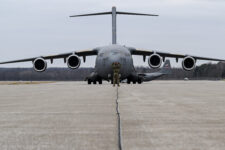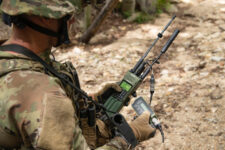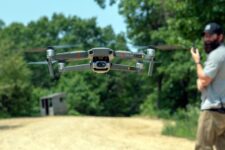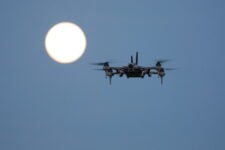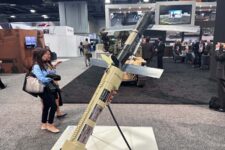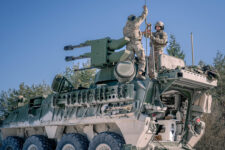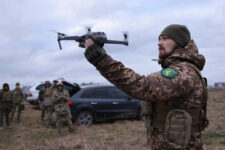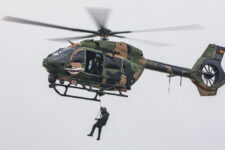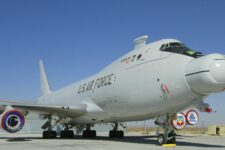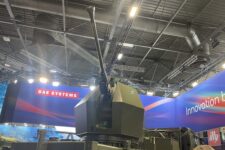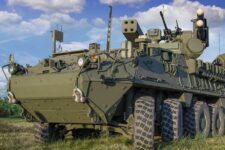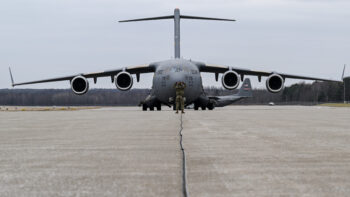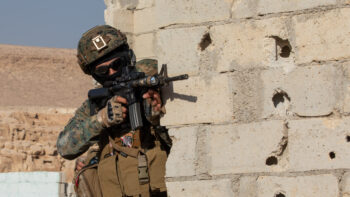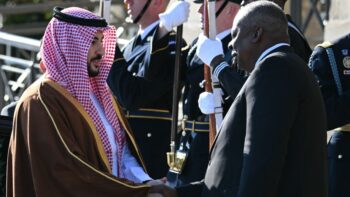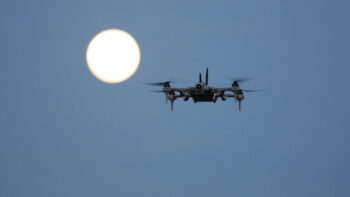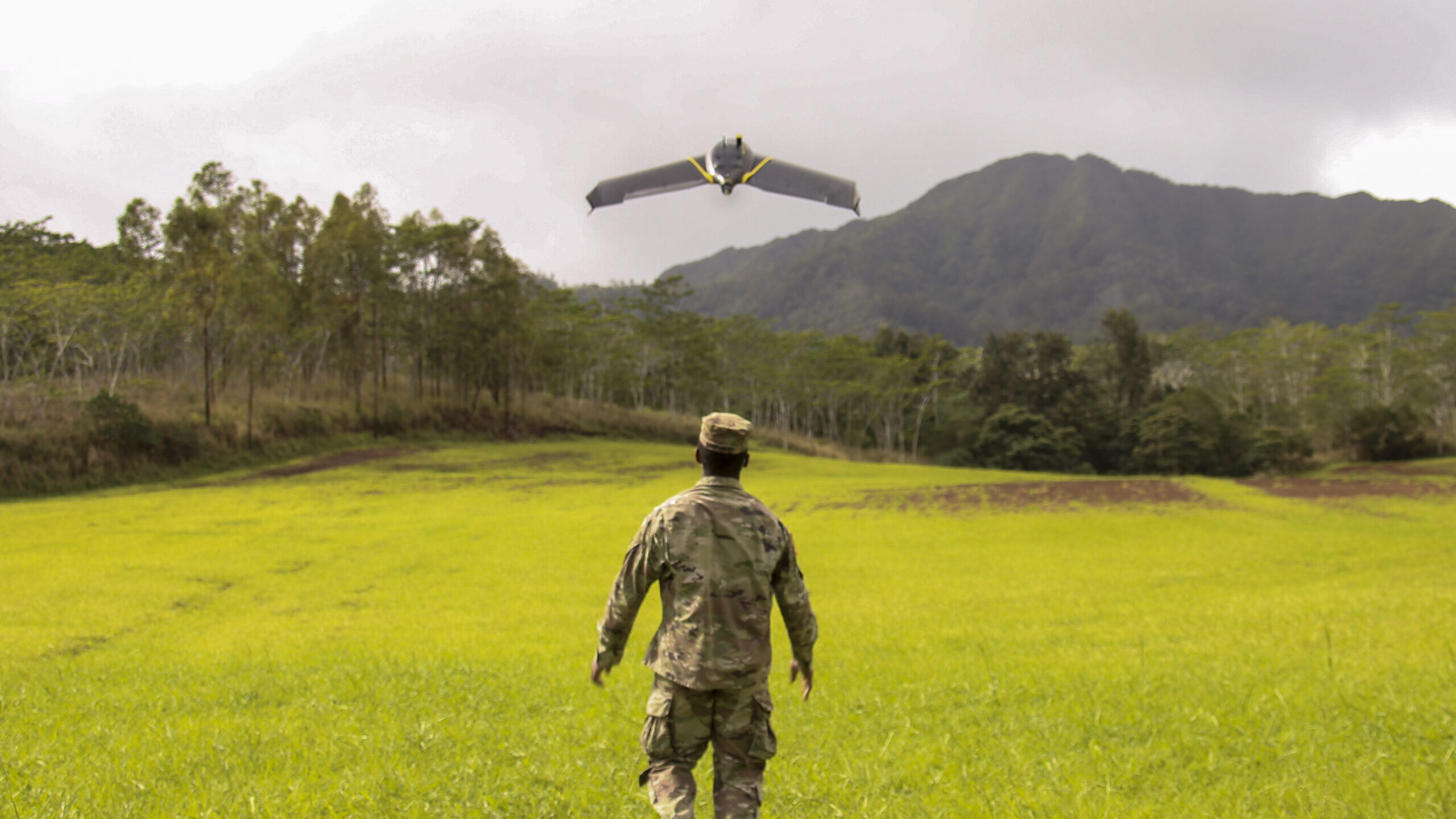
Military intelligence Soldiers with the 25th Infantry Division train on the One World Terrain drone and mapping system on February 4, 2021 at Schofield Barracks, Hawaii. (US Army photo by Staff Sgt. Thomas Calvert)
The idea of creating a drone corps within the US Army has been floating around for several months, but got a burst of energy when it was inserted into the most recent draft of the House’s defense policy bill. Below, retired Army Maj. Gen. John Ferrari argues moving forward with its creation would be a good thing.
In the recently-passed House Armed Services Committee draft of the National Defense Authorization Act, members supported the creation of a new branch in the US Army, one specifically dedicated to drones. According to congressional language, this new Drone Corps would be responsible for projects, programs, and activities dealing with small and medium unmanned aircraft, systems that support these aircraft, and counter-UAS systems among other duties.
It’s seemingly a play on how Ukraine, the test case for how drones can be used on the battlefield, has created its own drone force. But the Army, in typical fashion, quickly batted away the idea by arguing that specialization in drones might not be warranted at this time.
According to Undersecretary of the Army Gabe Camarillo, “operating and defending against the drone threat” is a challenge faced by “all formations at multiple echelons.” He believes that a singular drone branch could disrupt ongoing distributed efforts and hinder the pace of weapons acquisition. This perspective highlights the tension between innovation and practicality within the military.
Similarly, in testimony before the Senate Armed Service Committee, the Army Chief of Staff Gen. Randy George stated that he does not believe it should be a separate branch and drones should instead be embedded and “resident in every formation, at every echelon.”
Despite the Army’s reservations, Congress has it right. With this proposal, Congress is recognizing that technology alone often isn’t responsible for military innovation. Instead, it’s a combination of technology and organizational change that causes innovation, exactly what this new Drone Corps would provide.
Couple this with the idea of creative destruction, and a strong case can be made for the establishment of a Drone Corps. And despite its usual bureaucratic reservations, the Army should get on board. The establishment of a dedicated drone branch within the US Army could very well be the key to innovation by unleashing competition between the otherwise monopolistic and entrenched branches.
In the civilian world, creative destruction, the process by which new technologies and ideas replace outdated ones, drives progress. Companies that fail to adapt are left behind, while those that embrace change thrive. Think of how the rise of e-commerce disrupted traditional retail or how smartphones revolutionized communication. In this dynamic environment, innovation is not just encouraged; it’s essential for survival. It’s why Amazon is worth trillions and Sears is bankrupt. The new and more efficient drive out the entrenched and risk averse.
Contrast this with the military. While the armed forces have a rich history of technological advancements, from the longbow to the tank, innovation often faces roadblocks. Why? Entrenched interests play a significant part. Bureaucracy, risk aversion, and the fear of disrupting established norms can stifle creativity.
Additionally, if General George is correct and everyone “owns” drones, then what we may have is a tragedy of the commons, where everyone consumes this critical common resource, yet no specific branch or formation wants to pay for it.
The case for a drone operator branch in the Army is therefore several-fold. First, it will encourage specialization and expertise. Drone technology has evolved rapidly, and its applications extend beyond reconnaissance. From precision strikes to logistics support, drones are force multipliers. A dedicated branch would allow operators to specialize, develop expertise, and innovate in this critical class of systems.
Next, like any new innovation, agility and adaptability will be crucial. A separate branch would streamline decision-making and bypass the parochial interests of the other branches who could be threatened by the innovation. Drone operators could respond swiftly to emerging threats, unencumbered by bureaucratic hurdles.
Oftentimes it’s old organizations that resist and sabotage the new. The military is no different, as its existing branches can stifle creativity amid their competition between each other for scarce resources and existing programs of record. The Army created the Cyber branch in 2014, the Special Forces branch in 1987, and the Aviation branch in 1983 for precisely these reasons. Congress also established the Space Force to get around these same problems. Simply put, it’s hard to get promoted in an existing branch if you are advocating to create different capabilities that will render it obsolete.
Third, this represents a monumental cultural shift, similar to the adoption of aviation and armor by the Army following World War I. Establishing a drone operator branch sends a clear message: innovation matters. It encourages a culture of experimentation, risk-taking, and continuous improvement.
Lastly, and no less important, a drone branch would provide the Army with legislative cover and protection from other long-standing and entrenched bureaucracies who may want to take over and marginalize all flying drone programs down the road.
It is time to break the mold. Creating a drone operator branch would acknowledge that warfare is changing, and the US Army must adapt. By learning from history and from the forces of creative destruction in the civilian sector, this new branch can overcome entrenched interests and foster innovation. The Army should seize this opportunity to embrace the future rather than being held hostage by the past.
Retired US Army Maj. Gen. John G. Ferrari is a senior nonresident fellow at AEI. Ferrari previously served as a director of program analysis and evaluation for the service.
